
| Introduction | Victorian Childhood | Philanthropy | BC Protestant Orphans' Home | References | Site Information |
EDWARD & MARY CRIDGE
Edward & Mary Cridge
Early years in England
Arrival in Victoria
From Fort to City
Continued work in the community
Later years
Cridge-Hills Doctrinal Conflict
Early years in England
Arrival in Victoria
From Fort to City
Continued work in the community
Later years
Cridge-Hills Doctrinal Conflict
Edward & Mary Cridge
Edward
and Mary Cridge’s most enduring legacy can be found in the Protestant Orphans’
Home. By the summer of 1873 the growing number of orphans in Victoria
had been cause for concern for some time. Independent families had
been taking in orphans on their own; however, this system was proving
incapable of meeting growing demands. Therefore out of necessity the
Protestant Orphans’ Home was established as a joint collaboration
between four of the denominational Protestant churches in Victoria.
The founders strove to rise above their theological differences and
build a haven for destitute children. The Home was opened on November
8th, 1873 in a rented cottage on Blanshard and Rae Streets. [1] Edward Cridge
was on the first men's committee of twelve, and continued to serve the
interests of the Home well into his nineties. Mary served on the women's committee from its inception.
The Early Years in England
Edward Cridge was born in Devonshire, England on December 17th, 1817. His mother Grace died when he was still very young, leaving Cridge’s schoolmaster father John to raise him alone. [2] The future Reverend Cridge attended both North Milton and South Milton grammar schools as a young boy, proving to be a very bright pupil. In 1837 at the age of 19 Cridge was appointed third master of Oundle grammar school in Northampton; a position he would hold for six years. By 1848 the now 31 year old Cridge had earned his Bachelor of Arts degree from Cambridge. The same year the ambitious Cridge also passed his theological examination and was ordained by the Bishop of Norfolk in 1850.
Following a move to Essex in 1851 Cridge was appointed incumbent of Essex’s Christ Church and during his three year tenure proved to be a very able and dedicated minister to his congregation. In fact, Cridge was so dedicated to serving others that his own health suffered from personal neglect. Needing a change, Cridge applied for the vacant Hudson’s Bay Company chaplaincy at Fort Victoria. He was quickly accepted early in September 1854. [3]
Arrival in Victoria
Prior to setting out on this life changing voyage, Cridge courted and married his longtime philanthropic compatriot Mary Winmill with the hurried wedding taking place on September 14th, 1854. One week later this evangelical pair set sail for Victoria aboard the Marquis of Bute. The journey from England lasted more than six months; however, the Cridges utilized the voyage as an opportunity to preach the gospel to the captain and crew, showing their Christian evangelical spirit. [4] Upon arriving in Victoria Cridge began to minister from Fort Victoria where the HBC’s James Douglas had set aside a few empty rooms for the Reverend and his wife to use until construction was completed at Victoria District Church in the summer of 1856. Cridge named the sparse new chapel Christ Church. [5] The young family got by on Reverend Cridge’s annual 400 pound salary, and lived in the Christ Church parsonage.
During this early period of his tenure in Victoria Reverend Cridge became a prominent member of the growing community, endearing himself to many Hudson’s Bay Company workers and administrators. In addition to his duties as Chaplin, James Douglas appointed Cridge superintendent of education. Cridge held the post, without pay, from 1856 until he was replaced by Alfred Waddington in 1865. [6]
From Fort to City
The Fraser River Gold rush began to pick up steam shortly after the Reverend’s arrival, presenting new challenges for the Cridge’s and the community. By late 1858 tens of thousands of people had passed through Victoria, resulting in a slew of new businesses and saloons catering to and supplying the prospectors. Victoria had become thoroughfare for miners, prostitutes, and wide variety of ethnic contingents. Cridge recognized the need for social action in the face of such an onslaught, often championing the rights of the underprivileged and destitute. [7] Feeling his growing burden, the Reverend wrote to London to ask for assistance. Cridge hoped to receive two or three more priests to supplement his own work. Instead, the Church of England saw fit to send out Bishop George Hills to oversee Church operations in the Columbia District. The two men got along well at first with the Bishop remarking the he was, “very fortunate in Mr. Cridge, the original clergyman here. He is a truly good man, a sincere and devout Christian. He enters into all my plans and is a great support to me.” [8] Bishop Hills appointed Cridge Dean of Christ Church in 1860 and for a number of years the men worked in co-operation building the Anglican Church in British Columbia and striving to better the lot of God’s children in British Columbia. [9] However, their relationship would disintegrate following a rapacious doctrinal conflict in 1872, splitting the Anglican Church in Victoria.
Continued Work in the Community
In midst of the bureaucratic shuffling and doctrinal conflict that encompassed the 1860’s and 1870’s Cridge and his wife continued their works in the community. Dean Cridge was instrumental in the establishment of the first hospital in Victoria in 1858, securing a grant from Governor James Douglas for the project. The original site at Yates and Broad Streets was supplied by Mrs. Thomas Blinkhorn. Demand soon overran the small facility and after a number of different incarnations, the Royal Jubilee hospital was eventually erected on its current site in 1890. [10] Cridge also protested the deplorable living conditions of the prisoners in Victoria’s jails appealing in the Gazette, “There is no doubt that the accommodation of the prison is insufficient for the criminals to say nothing of the maniacs.” He called on both the Government, and the public to help with the situation. [11]
Later Years
Cridge split with the Church of England following the Cridge-Hills dispute in the fall of 1874. By the next year Cridge had been elected as a bishop in the Reformed Episcopal Church of Chicago overseeing Church affairs from San Francisco to Alaska. He continued to preach at the new Church of Our Lord from 1875 until his resignation in 1895. Cridge remained an active member in Victoria’s philanthropic and religious circles. He helped run the new Taylor Building that housed the Protestant Orphans’ Home by 1893 and was active in the establishment of the YWCA, and Central High school. Cridge became a widower when his Mary died in 1905. The old bishop would live on until 1913 when he passed in his 95th year. [12]
Edward Cridge was born in Devonshire, England on December 17th, 1817. His mother Grace died when he was still very young, leaving Cridge’s schoolmaster father John to raise him alone. [2] The future Reverend Cridge attended both North Milton and South Milton grammar schools as a young boy, proving to be a very bright pupil. In 1837 at the age of 19 Cridge was appointed third master of Oundle grammar school in Northampton; a position he would hold for six years. By 1848 the now 31 year old Cridge had earned his Bachelor of Arts degree from Cambridge. The same year the ambitious Cridge also passed his theological examination and was ordained by the Bishop of Norfolk in 1850.
Following a move to Essex in 1851 Cridge was appointed incumbent of Essex’s Christ Church and during his three year tenure proved to be a very able and dedicated minister to his congregation. In fact, Cridge was so dedicated to serving others that his own health suffered from personal neglect. Needing a change, Cridge applied for the vacant Hudson’s Bay Company chaplaincy at Fort Victoria. He was quickly accepted early in September 1854. [3]
Arrival in Victoria
Prior to setting out on this life changing voyage, Cridge courted and married his longtime philanthropic compatriot Mary Winmill with the hurried wedding taking place on September 14th, 1854. One week later this evangelical pair set sail for Victoria aboard the Marquis of Bute. The journey from England lasted more than six months; however, the Cridges utilized the voyage as an opportunity to preach the gospel to the captain and crew, showing their Christian evangelical spirit. [4] Upon arriving in Victoria Cridge began to minister from Fort Victoria where the HBC’s James Douglas had set aside a few empty rooms for the Reverend and his wife to use until construction was completed at Victoria District Church in the summer of 1856. Cridge named the sparse new chapel Christ Church. [5] The young family got by on Reverend Cridge’s annual 400 pound salary, and lived in the Christ Church parsonage.
During this early period of his tenure in Victoria Reverend Cridge became a prominent member of the growing community, endearing himself to many Hudson’s Bay Company workers and administrators. In addition to his duties as Chaplin, James Douglas appointed Cridge superintendent of education. Cridge held the post, without pay, from 1856 until he was replaced by Alfred Waddington in 1865. [6]
From Fort to City
The Fraser River Gold rush began to pick up steam shortly after the Reverend’s arrival, presenting new challenges for the Cridge’s and the community. By late 1858 tens of thousands of people had passed through Victoria, resulting in a slew of new businesses and saloons catering to and supplying the prospectors. Victoria had become thoroughfare for miners, prostitutes, and wide variety of ethnic contingents. Cridge recognized the need for social action in the face of such an onslaught, often championing the rights of the underprivileged and destitute. [7] Feeling his growing burden, the Reverend wrote to London to ask for assistance. Cridge hoped to receive two or three more priests to supplement his own work. Instead, the Church of England saw fit to send out Bishop George Hills to oversee Church operations in the Columbia District. The two men got along well at first with the Bishop remarking the he was, “very fortunate in Mr. Cridge, the original clergyman here. He is a truly good man, a sincere and devout Christian. He enters into all my plans and is a great support to me.” [8] Bishop Hills appointed Cridge Dean of Christ Church in 1860 and for a number of years the men worked in co-operation building the Anglican Church in British Columbia and striving to better the lot of God’s children in British Columbia. [9] However, their relationship would disintegrate following a rapacious doctrinal conflict in 1872, splitting the Anglican Church in Victoria.
Continued Work in the Community
In midst of the bureaucratic shuffling and doctrinal conflict that encompassed the 1860’s and 1870’s Cridge and his wife continued their works in the community. Dean Cridge was instrumental in the establishment of the first hospital in Victoria in 1858, securing a grant from Governor James Douglas for the project. The original site at Yates and Broad Streets was supplied by Mrs. Thomas Blinkhorn. Demand soon overran the small facility and after a number of different incarnations, the Royal Jubilee hospital was eventually erected on its current site in 1890. [10] Cridge also protested the deplorable living conditions of the prisoners in Victoria’s jails appealing in the Gazette, “There is no doubt that the accommodation of the prison is insufficient for the criminals to say nothing of the maniacs.” He called on both the Government, and the public to help with the situation. [11]
Later Years
Cridge split with the Church of England following the Cridge-Hills dispute in the fall of 1874. By the next year Cridge had been elected as a bishop in the Reformed Episcopal Church of Chicago overseeing Church affairs from San Francisco to Alaska. He continued to preach at the new Church of Our Lord from 1875 until his resignation in 1895. Cridge remained an active member in Victoria’s philanthropic and religious circles. He helped run the new Taylor Building that housed the Protestant Orphans’ Home by 1893 and was active in the establishment of the YWCA, and Central High school. Cridge became a widower when his Mary died in 1905. The old bishop would live on until 1913 when he passed in his 95th year. [12]
Sources
1 Vernon Story, et al, The Home: Orphans’ Home to Family Center, 1873-1998 (Victoria: Cridge Center for the Family, 1999), 42.
2 Story, The Home, 17.
3 Derek Pethick, Men of British Columbia (Victoria: Hancock House Publishers, 1975), 70.
4 Story, The Home, 21-23.
5 Story, The Home, 24-25.
6 Pethick, Summer of Promise, 73.
7 Story, The Home, 25-26.
8 Story, The Home, 30.
9 Story, The Home, 29.
10 Harry Gregson, A History of Victoria: 1842-1970 (Victoria: The Victoria Observer Publishing Co., 1970), 163.
11 Story, The Home, 28.
12 Story, The Home, 37.
Cridge-Hills Doctrinal Conflict
In
1869 the original Christ Church Cathedral was destroyed by fire. In the
following years Christ Church was reconstructed and was consecrated on
December 5th, 1872. The day was filled with ceremonies and
preaching by various members of the Anglican clergy from the
surrounding districts. The last speaker of the day was Archdeacon
C.W.S. Reece of Vancouver. Reece, like Hills, held that religious
worship and devotion could be deepened by an increase in formality and
ceremonial services in the church. At the consecration Reece
chose to preach on the contentious subject of ritualism, which had
divided the Anglican Church for the last fifty years. Reece saw
ritualism as “a necessity in the outward expression of the
spiritual life and energy of the worshipper.” [1] When
Reece had finished preaching Cridge, who had preached in the sparsely
adorned Christ Church since 1856 took exception stating:
Cridge’s statement was met with vociferous approval from those in attendance. His public objection sparked the Cridge-Hills dispute that would paint the pages of the local papers until its conclusion in 1874.
Dean Cridge and Bishop Hills exchanged angry correspondence for over a year until Cridge finally went too far by challenging the Bishop’s authority in an open letter in Victoria’s newspapers on January 9th, 1874. As a result of Cridge’s outburst and subsequent letters, Hills charged the Dean with breech of canon law for publicly contradicting a sermon and for challenging the Bishop’s authority. Both men probably believed that they were defending the faith, but Bishop Hills had jurisdiction and dragged Dean Cridge before an Ecclesiastical Court in September 1874. The four assessors found Cridge guilty on 16 of the 18 counts brought against him and Bishop Hills consequently suspended the Dean. However, Cridge stated that he would disregard the illegal mandate of the Bishop and called for the case to be brought before a secular court of law. [3]
Judge Matthew Ballie Begbie presided over the court case in October of 1874. Prior to the hearing the old judge tried to persuade the ministers, who were both friends of his, to settle the matter out of court. However, Cridge would not retract his comments and Hills also stood his ground. On October 24, 1874 Judge Begbie found in favour of Hills. He forbade Cridge to minister at Christ Church and revoked his status as a clergyman in the Anglican Church. [4]
This outcome served to split the Anglican Church in Victoria. Throughout the dispute and trial Cridge had maintained many of his supporters from the old Christ Church, including many of his stalwart friends from the old HBC days. Cridge took his remaining followers and joined the Reformed Episcopal Church of America in early 1875; he was elected Bishop of the Pacific Coast jurisdiction later the same year. [5]
“My
Dearly beloved friends, it is with great shame and humility that as a
matter of conscience I feel it is my duty to say a few words to you
before we part. As your pastor, after what we have just heard I
feel it is my duty to raise my voice in protest against it.
During the 17 years that I have officiated as your pastor in this spot,
this is the first time ritualism has been preached here, and I pray
Almighty God it may be the last. So far as I can prevent it, it
shall be the last.” [2]
Cridge’s statement was met with vociferous approval from those in attendance. His public objection sparked the Cridge-Hills dispute that would paint the pages of the local papers until its conclusion in 1874.
Dean Cridge and Bishop Hills exchanged angry correspondence for over a year until Cridge finally went too far by challenging the Bishop’s authority in an open letter in Victoria’s newspapers on January 9th, 1874. As a result of Cridge’s outburst and subsequent letters, Hills charged the Dean with breech of canon law for publicly contradicting a sermon and for challenging the Bishop’s authority. Both men probably believed that they were defending the faith, but Bishop Hills had jurisdiction and dragged Dean Cridge before an Ecclesiastical Court in September 1874. The four assessors found Cridge guilty on 16 of the 18 counts brought against him and Bishop Hills consequently suspended the Dean. However, Cridge stated that he would disregard the illegal mandate of the Bishop and called for the case to be brought before a secular court of law. [3]
Judge Matthew Ballie Begbie presided over the court case in October of 1874. Prior to the hearing the old judge tried to persuade the ministers, who were both friends of his, to settle the matter out of court. However, Cridge would not retract his comments and Hills also stood his ground. On October 24, 1874 Judge Begbie found in favour of Hills. He forbade Cridge to minister at Christ Church and revoked his status as a clergyman in the Anglican Church. [4]
This outcome served to split the Anglican Church in Victoria. Throughout the dispute and trial Cridge had maintained many of his supporters from the old Christ Church, including many of his stalwart friends from the old HBC days. Cridge took his remaining followers and joined the Reformed Episcopal Church of America in early 1875; he was elected Bishop of the Pacific Coast jurisdiction later the same year. [5]
Sources
1 Vernon Story et al., The Home: Orphans’ Home to Family Center, 1873 to 1998 (Victoria: Cridge Center for the Family, 1999), 31-32
2 Derek Pethick, Men of British Columbia (Victoria: Hancock House Publishers, 1975), 72.
3 Story., The Home, 35.
4 Pethick, Men of British Columbia, 73.
5 Story, The Home, 36-37.
Topics in this section:
Introduction to the Orphans' Home
Edward & Mary Cridge
Buildings & Land
Edward & Mary Cridge
Early years in England
Arrival in Victoria
From Fort to City
Continued work in the community
Later years
Cridge-Hills Doctrinal Conflict
Children of the HomeArrival in Victoria
From Fort to City
Continued work in the community
Later years
Cridge-Hills Doctrinal Conflict
Buildings & Land
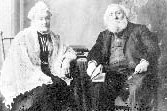
Edward and Mary Cridge
(BC Archives A-01208)
top of page
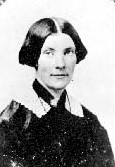
Mary Cridge
(BC Archives A-01304)
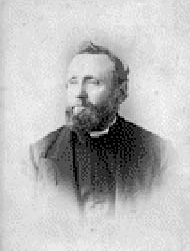
Edward Cridge, 1878
(BC Archives A-01202)
top of page
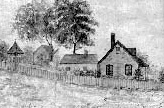
Christ Church Parsonage, Dean Cridge Residence, 1867 (BC Archives PDP00367)
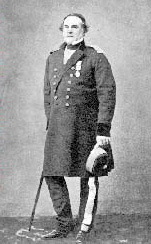
Sir James Douglas (BC Archives A-01227)
top of page

Engraving of Victoria, 1863
(private collection)
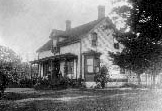
The Cridge's Home in James Bay
(BC Archives G-07285)
top of page
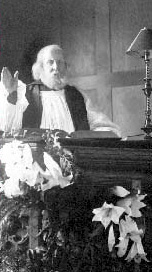
Bishop Cridge
(BC Archives A-01198)
top of page

George Hills
(BC Archives G-05683)
top of page
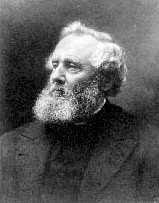
Edward Cridge c1875
(BC Archives A-01196)
top of page
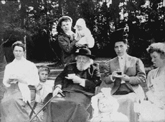
Group photo with Edward Cridge in centre (City of Victoria Archives C-00486)
[image does not enlarge]
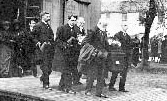
Funeral of Edward Cridge
(BC Archives A-01207)
top of page
© 2007 All Rights Reserved
[HOME] [VICTORIAN CHILDHOOD] [PHILANTHROPY] [ORPHANS' HOME] [REFERENCES] [SITE INFO]